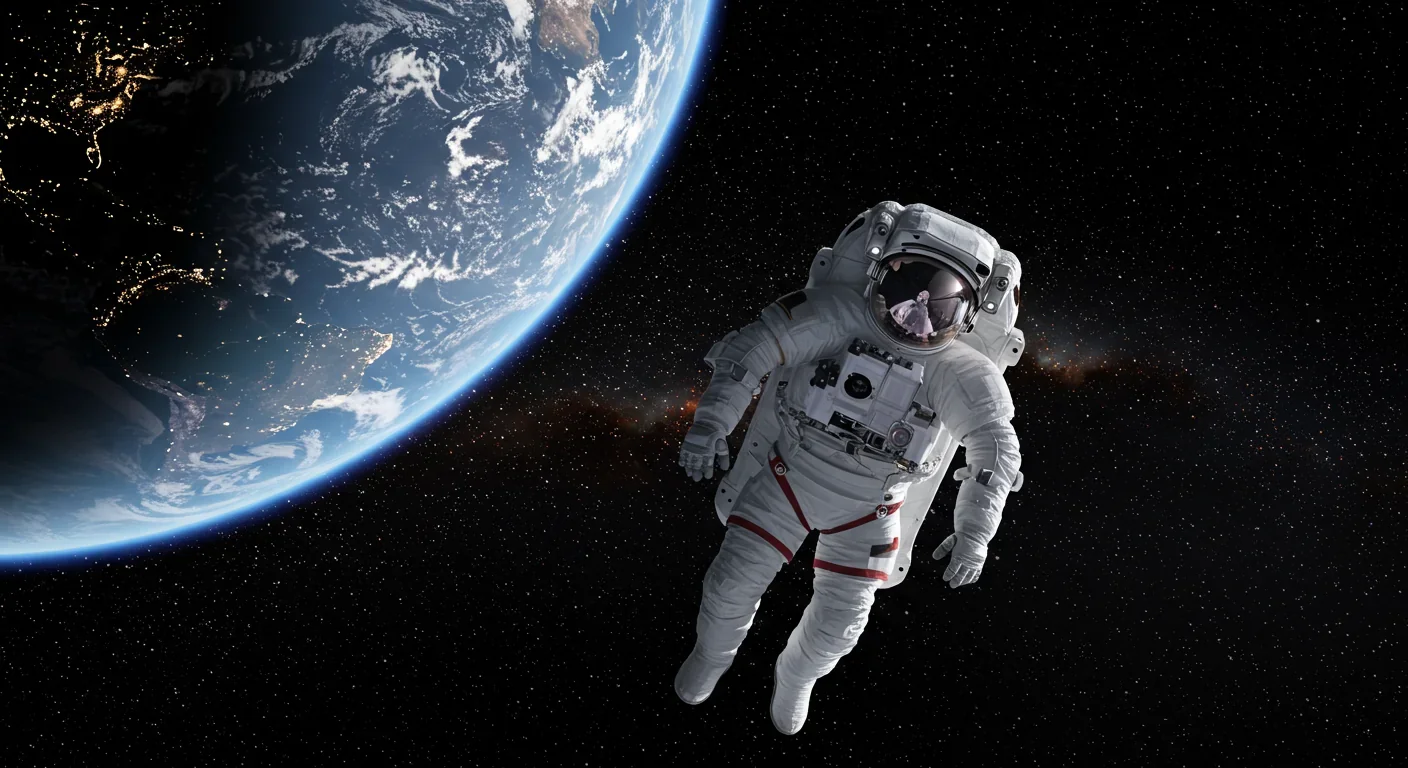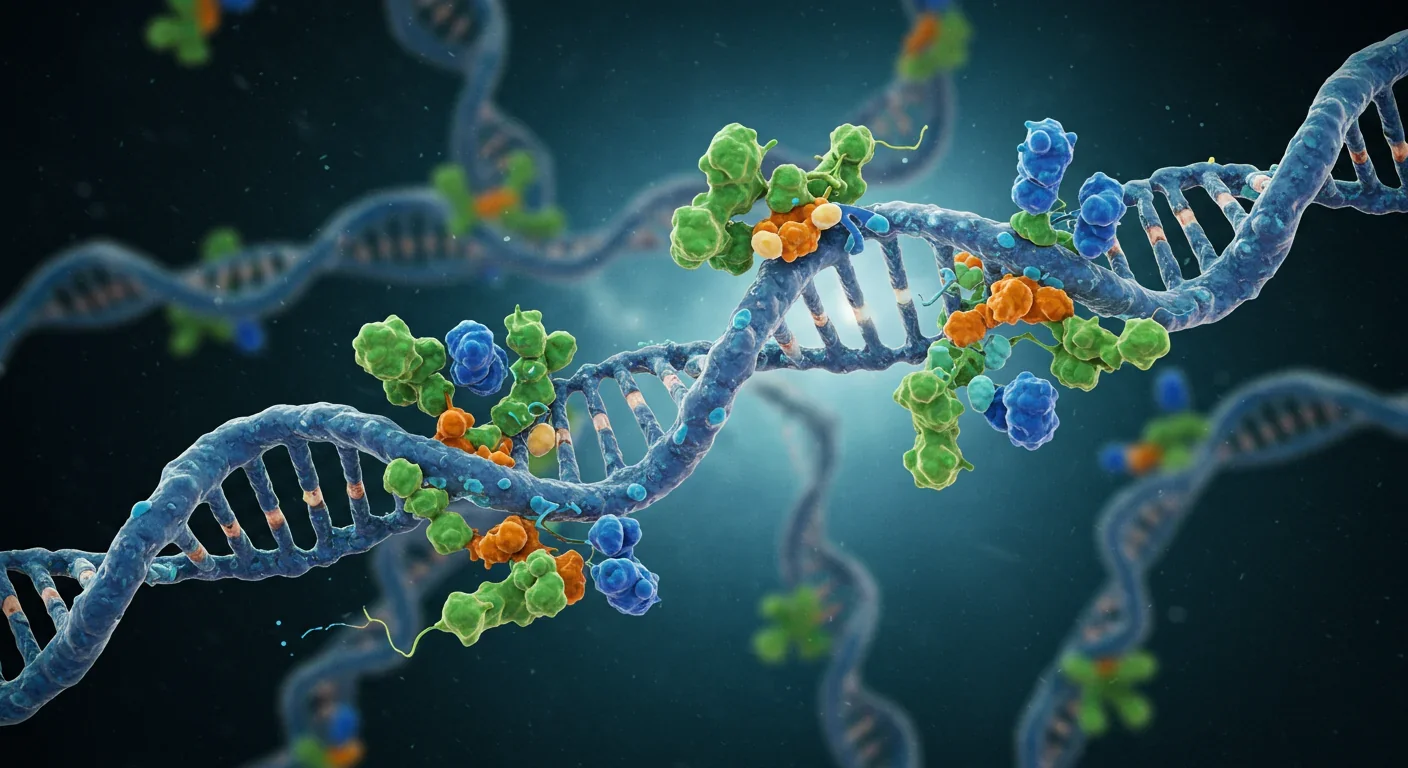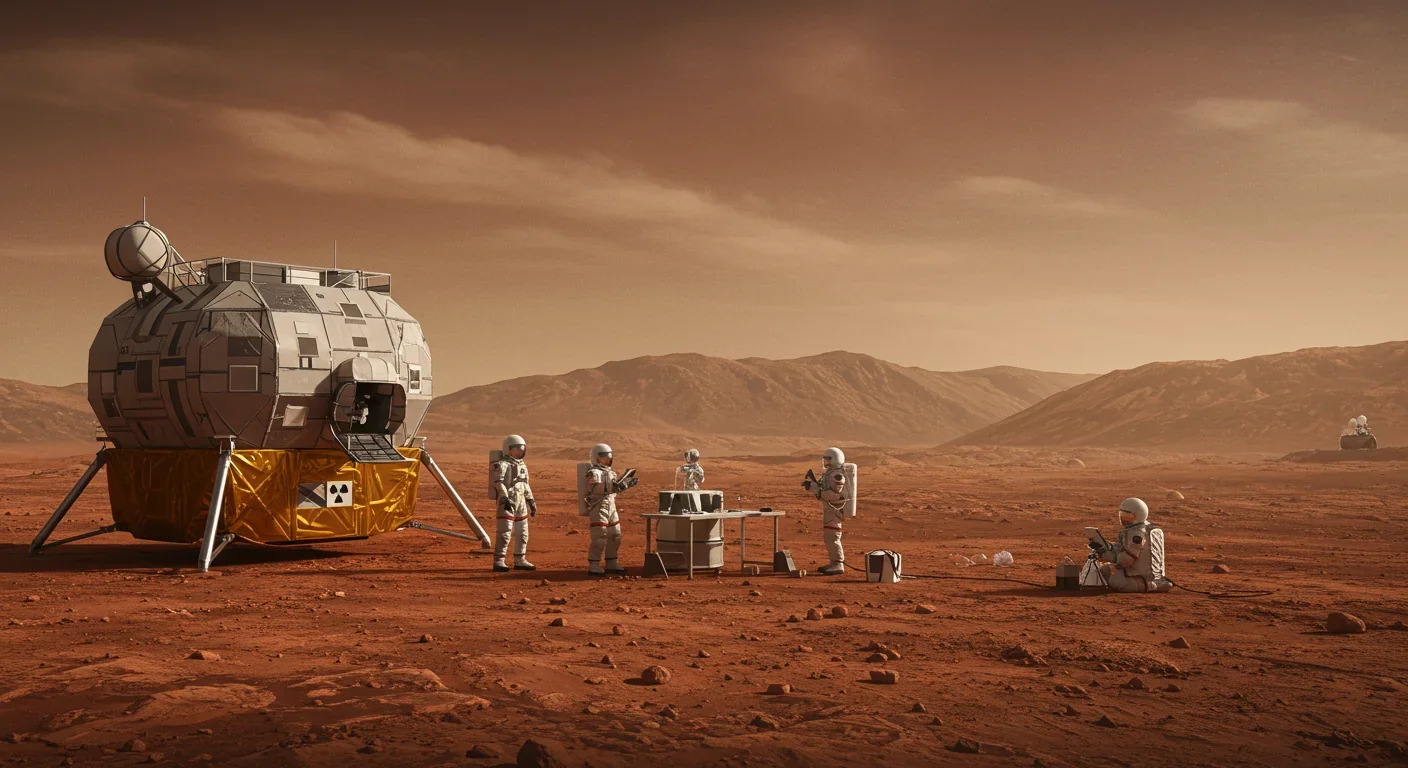Fusion Rockets Could Reach 10% Light Speed: The Breakthrough

TL;DR: Low-dose space radiation might trigger protective cellular mechanisms rather than cause harm, challenging decades of safety policy and potentially enabling safer Mars missions, improved cancer treatments, and a rethink of nuclear energy regulations.

By 2035, NASA plans to land humans on Mars. That mission will subject astronauts to radiation levels far beyond anything experienced in low Earth orbit, potentially exposing them to more than 1,000 millisieverts over three years. Traditional safety models predict this should significantly increase cancer risk. But a growing body of evidence suggests the opposite might be true: low doses of cosmic radiation could actually activate protective mechanisms that make cells more resilient.
This isn't science fiction. It's radiation hormesis, and it's forcing scientists to rethink everything they thought they knew about space travel safety.
For decades, radiation protection followed one simple rule: any dose, no matter how small, increases your cancer risk proportionally. The linear no-threshold (LNT) model dominated policy, shaped by Cold War fears and atomic bomb survivor data. NASA, the EPA, and international agencies built entire regulatory frameworks on the assumption that radiation exposure had no safe level.
Then researchers started noticing something strange. Studies on nuclear power workers found no increase in cancer mortality compared to the general population, despite cumulative exposures. A 2024 analysis of 301 U.S. astronauts and 117 cosmonauts revealed zero measurable increase in cancer deaths. Meanwhile, cellular experiments showed that cells exposed to small radiation doses, around 100 milligray or less, actually survived better when hit with higher doses later.
The hormesis hypothesis proposes that low-level radiation behaves less like a poison and more like a vaccine, stimulating cellular defenses rather than overwhelming them. It's a biphasic response: beneficial at low doses, neutral at moderate levels, harmful only when high. If true, the implications stretch far beyond space exploration into cancer therapy, nuclear energy regulation, and our fundamental understanding of cellular resilience.

The LNT model emerged from horrific real-world data. Hiroshima and Nagasaki survivors exposed to high acute radiation doses showed clear, measurable increases in cancer rates. Epidemiologists extrapolated that relationship downward, assuming proportional harm at all levels.
But space radiation is fundamentally different. A nuclear detonation delivers a massive dose in seconds. Cosmic rays trickle in slowly, day after day. That difference in dose rate turns out to matter enormously because it gives cells time to mount coordinated defensive responses.
Early hints appeared in the 1980s when radiobiologists noticed that cells conditioned with low doses showed increased DNA repair enzyme activity. By the 2000s, the French Academy of Sciences reported approximately 40% of laboratory experiments on cell cultures and animals indicated some degree of hormetic benefit.
A 2011 in vitro study found DNA repair foci formation rates of 64 per gray at 0.1 gray doses, but only 15 per gray at 2 gray doses, a nonlinear response that directly contradicted the linear model.
Inside every cell, radiation triggers a molecular cascade. Ionizing particles rip electrons from atoms, creating reactive oxygen species that can break DNA strands and damage proteins. At high doses, this overwhelms repair systems. At low doses, something different happens.
Radioprotective mechanisms activate on multiple fronts. Sulfhydryl compounds like cysteamine chemically consume oxygen before it generates new free radicals. Antioxidant enzymes scavenge hydroxyl radicals. DNA repair proteins rush to break sites. Cells produce molecules like spermidine that stabilize membranes.
This coordinated response doesn't just repair damage—it overcompensates. Cells exposed to 50 milligray show enhanced immune function, increased lifespan in animal models, and reduced cancer rates in some experimental setups. In mice fed high-fat diets, 0.5 gray whole-body exposure inhibited atherosclerosis progression by dampening inflammatory signaling.
The mechanisms mirror exercise or fasting: a manageable stressor that makes the organism stronger. Dose rate matters critically. A 100-millisievert dose delivered over six months allows repair enzymes to work continuously. The same dose in one second creates a spike that saturates repair capacity. This is why astronauts on the International Space Station, exposed to roughly 72 millisieverts over six months, show no cancer increase.
A three-year Mars journey exposes crews to 1,000 millisieverts or more, well above current career limits based on LNT assumptions. NASA caps astronaut radiation-induced death risk at 3% over a career. If hormesis is real, those limits might be unnecessarily conservative, grounding missions that could proceed safely.
Galactic cosmic rays and solar particle events pose unique challenges. Cosmic rays include heavy ions like iron nuclei that punch through tissue in narrow tracks, causing dense, clustered damage harder to repair. Whether hormesis applies equally to all radiation types remains uncertain.
Some researchers propose adaptive shielding strategies. Instead of maximizing shielding to drive exposure as low as possible, missions could target an optimal dose range that balances protection with biological priming. Recent research suggests radiation levels in deep space may be lower than older models predicted, potentially keeping multi-year Mars missions within a beneficial hormetic window.
The psychological dimension matters. Astronauts operating under LNT assumptions carry the mental burden of accruing "damage" with every passing day. If hormesis reframes exposure as potentially protective, that could reduce stress and improve crew morale.
If low pre-doses can prime healthy cells to better withstand therapeutic radiation, oncologists could deliver higher tumor-killing doses with fewer side effects. Animal experiments support this: rodents given small conditioning doses before larger exposures showed reduced inflammation and faster recovery.
Diagnostic imaging presents a different puzzle. A chest CT scan delivers around 7 millisieverts. Under LNT, each scan adds cancer risk. If hormesis holds, those doses might be neutral or mildly beneficial, erasing the risk-benefit calculus that currently limits imaging.
Critics warn this could justify unnecessary scans. Regulatory bodies like the EPA remain cautious, noting that while some studies show benefits, others show harm. One editorial claimed rejecting LNT could have prevented nearly 2 million cancer deaths in 2022 alone, though that figure was speculative and unsupported by published data.

Radiation safety is a multibillion-dollar industry. Nuclear plants spend heavily on shielding and monitoring to comply with LNT-based limits. If hormesis becomes accepted science, those investments might be partially misdirected.
Regulatory frameworks could shift from minimizing all exposure to targeting optimal ranges. That might lower costs for nuclear energy, making it more competitive and accelerating the clean-energy transition. It could extend allowable mission durations in space without career-limit bottlenecks.
But regulatory change moves slowly. The UN Scientific Committee on the Effects of Atomic Radiation stated that until uncertainties are resolved, a proportional risk model remains most scientifically defensible. The National Council on Radiation Protection reaffirmed in 2018 that epidemiologic studies support continued use of LNT.
Jobs would shift. Radiation safety roles might diminish if exposure limits relax. Conversely, new opportunities could emerge in low-dose radiation therapy and hormetic conditioning protocols for astronauts.
Hormesis isn't universally accepted. A meta-analysis of nuclear workers found an excess relative risk of 8.78 per millisievert for arteriosclerotic heart disease. Chernobyl emergency workers showed statistically significant dose-response for ischemic heart disease.
These findings suggest that while cancer risk might be hormetic, cardiovascular risk might not be. The body isn't a single system; different tissues and endpoints may respond differently.
Epidemiology struggles at low doses because the signal-to-noise ratio is terrible. Confounding factors like smoking and diet swamp the signal. Some researchers argue we'll never have definitive human data at these levels and must rely on mechanistic understanding from cellular studies.
Internationally, approaches vary. Japan maintains strict LNT-based limits. France has explored hormesis academically but remains cautious in policy. China's expanding space program is watching closely; if hormesis proves robust, it could enable longer crewed missions without Western career-limit constraints.
High-quality prospective cohort studies tracking tens of thousands of radiation workers are underway. Results in the next decade could clarify dose-response curves at low levels.
Animal models with human-relevant genetics can test whether hormesis varies by genetic background. Mechanistic biomarkers like gamma-H2AX levels, which indicate DNA damage, might predict individual repair capacity. Astronauts could be screened before missions; those with robust adaptive responses might safely tolerate higher exposures.
Natural experiments also inform the debate. Populations in high-background radiation areas like Ramsar, Iran receive 10 to 50 millisieverts per year. Decades of health monitoring show no increase in cancer rates. While confounding factors complicate interpretation, these populations offer a real-world test.
Pharmaceutical approaches are parallel. Natural radioprotectors like plant polyphenols enhance endogenous repair systems. Combining low-dose priming with targeted radioprotectors could offer a belt-and-suspenders approach for astronauts.
Radiation evokes deep-seated fear, a legacy of Hiroshima, Chernobyl, and Fukushima. The LNT model has arguably contributed to irrational fear, leading to overreaction and psychological trauma that caused more harm than the radiation itself.
If hormesis reframes low-dose radiation as benign or beneficial, it could reduce that fear, enabling rational risk assessment. But it also risks complacency that leads to underprotection when doses aren't actually low.
Transparency is critical. Any shift away from LNT must be grounded in rigorous, peer-reviewed science and communicated clearly. Misrepresenting hormesis to justify unsafe practices would be a catastrophic breach of trust.
Space exploration adds ethical complexity. Astronauts are informed, consenting adults. But what about space tourists or families living on Mars? At what age is it ethical to expose children to chronic cosmic radiation, even if hormetic in adults? Developmental biology might respond differently.
Whether hormesis becomes mainstream or remains contested, individuals and institutions can prepare. Space agencies should invest in dosimetry research and flexible mission planning. Astronaut training might eventually include hormetic conditioning protocols.
Medical professionals should stay current on radiation biology, understanding that dose-response is more nuanced than a straight line. Patients benefit when doctors explain that a CT scan's 10 millisieverts is comparable to natural background variation.
For nuclear energy, hormesis could be a game-changer. But the industry must resist overselling before science is settled.
For the public, the key is critical thinking. Radiation is neither a boogeyman nor a panacea. Dose, dose rate, radiation type, tissue, and genetics all matter. Learning to ask the right questions empowers better decisions.
By 2035, when those first Martian bootprints are made, we'll know far more. Ongoing studies will either solidify the hormetic hypothesis, refine it, or refute it. Whatever the outcome, space radiation research is pushing biology forward, revealing how life adapts to hostile environments.
The downstream effects ripple through society. If Mars missions become routine because radiation risk is manageable, humanity becomes multiplanetary. If cancer therapy harnesses hormetic principles, survival rates rise. If nuclear energy gets a second wind, climate goals come within reach.
The stakes are enormous, the science is evolving, and the conversations happening now in labs, clinics, and space agencies will shape how we explore and heal for generations. Whether you're planning a Mars mission, scheduling a medical scan, or simply curious about how the universe affects your biology, radiation hormesis is a concept worth understanding. Because the question isn't just whether low doses are safe—it's whether they might be the key to unlocking the next era of human resilience and exploration.

Recent breakthroughs in fusion technology—including 351,000-gauss magnetic fields, AI-driven plasma diagnostics, and net energy gain at the National Ignition Facility—are transforming fusion propulsion from science fiction to engineering frontier. Scientists now have a realistic pathway to accelerate spacecraft to 10% of light speed, enabling a 43-year journey to Alpha Centauri. While challenges remain in miniaturization, neutron management, and sustained operation, the physics barriers have ...

Epigenetic clocks measure DNA methylation patterns to calculate biological age, which predicts disease risk up to 30 years before symptoms appear. Landmark studies show that accelerated epigenetic aging forecasts cardiovascular disease, diabetes, and neurodegeneration with remarkable accuracy. Lifestyle interventions—Mediterranean diet, structured exercise, quality sleep, stress management—can measurably reverse biological aging, reducing epigenetic age by 1-2 years within months. Commercial ...

Data centers consumed 415 terawatt-hours of electricity in 2024 and will nearly double that by 2030, driven by AI's insatiable energy appetite. Despite tech giants' renewable pledges, actual emissions are up to 662% higher than reported due to accounting loopholes. A digital pollution tax—similar to Europe's carbon border tariff—could finally force the industry to invest in efficiency technologies like liquid cooling, waste heat recovery, and time-matched renewable power, transforming volunta...

Humans are hardwired to see invisible agents—gods, ghosts, conspiracies—thanks to the Hyperactive Agency Detection Device (HADD), an evolutionary survival mechanism that favored false alarms over fatal misses. This cognitive bias, rooted in brain regions like the temporoparietal junction and medial prefrontal cortex, generates religious beliefs, animistic worldviews, and conspiracy theories across all cultures. Understanding HADD doesn't eliminate belief, but it helps us recognize when our pa...

The bombardier beetle has perfected a chemical defense system that human engineers are still trying to replicate: a two-chamber micro-combustion engine that mixes hydroquinone and hydrogen peroxide to create explosive 100°C sprays at up to 500 pulses per second, aimed with 270-degree precision. This tiny insect's biochemical marvel is inspiring revolutionary technologies in aerospace propulsion, pharmaceutical delivery, and fire suppression. By 2030, beetle-inspired systems could position sat...

The U.S. faces a catastrophic care worker shortage driven by poverty-level wages, overwhelming burnout, and systemic undervaluation. With 99% of nursing homes hiring and 9.7 million openings projected by 2034, the crisis threatens patient safety, family stability, and economic productivity. Evidence-based solutions—wage reforms, streamlined training, technology integration, and policy enforcement—exist and work, but require sustained political will and cultural recognition that caregiving is ...

Every major AI model was trained on copyrighted text scraped without permission, triggering billion-dollar lawsuits and forcing a reckoning between innovation and creator rights. The future depends on finding balance between transformative AI development and fair compensation for the people whose work fuels it.